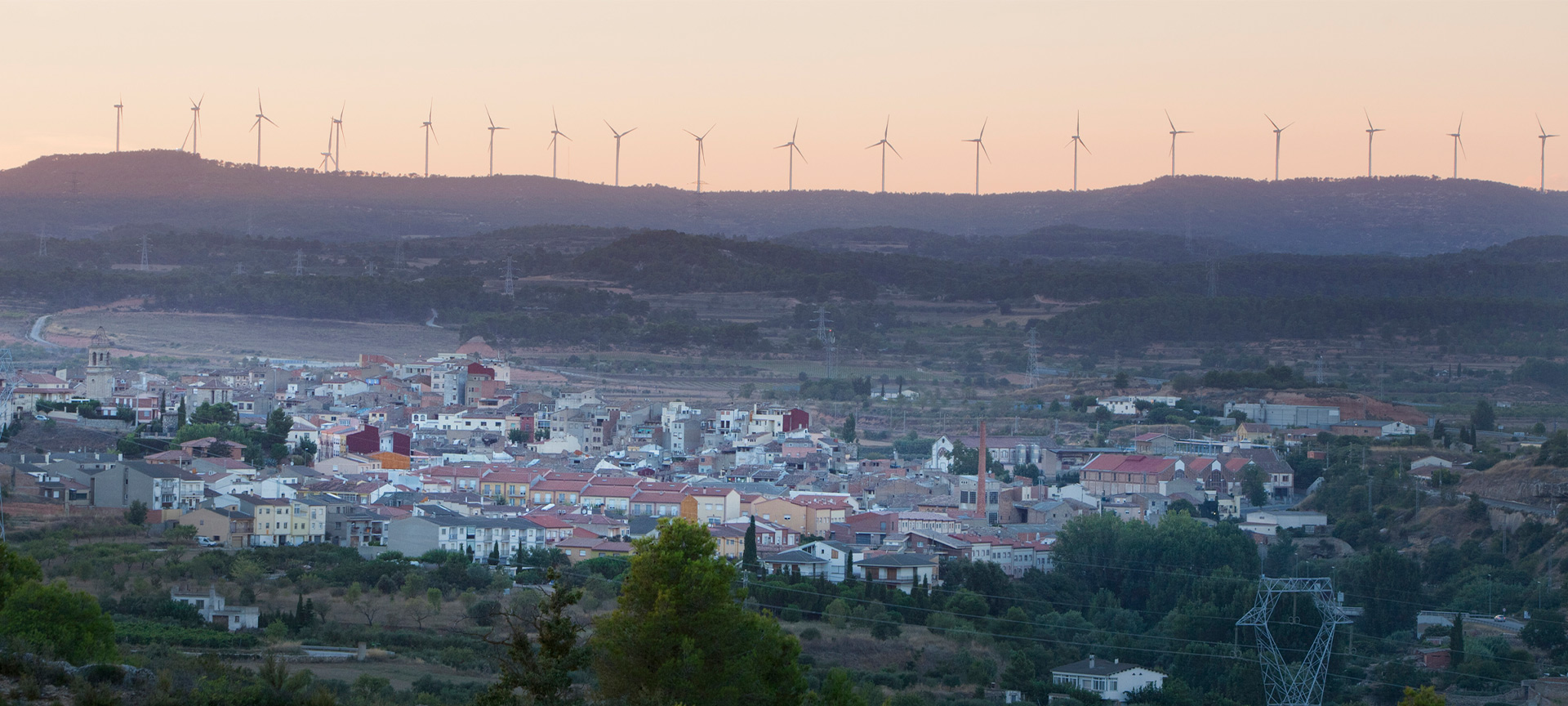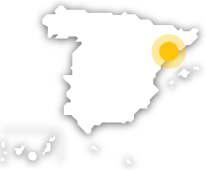In the heart of the Conca de Barberà region, halfway between the inland territory and the coast of Tarragona, is L’Espluga de Francolí.
Surrounded by lush natural surroundings, this town on the Costa Daurada is deeply linked to winemaking.L'Espluga, located on the so-called Cistercian Route, is also the threshold of the Monastery of Poblet. This Cistercian monastic complex, one of the most important in Spain, has been a UNESCO World Heritage Site since 1991.
Bathed by the waters of the Milans and Francolí rivers, L'Espluga de Francolí is one of the most visited towns in inland Tarragona. The incredible beauty of the surrounding nature and its proximity to the Monastery of Poblet – which still houses a monastic community – have allowed this municipality, with its deep agricultural roots, to develop an important tourist infrastructure related to outdoor sports such as hiking, cycling and horse riding, climbing and caving.Its status as a summer resort dates back to the end of the 19th century, with the development of Las Masías, a hotel complex located on the outskirts of the town that took advantage of the special properties of the springs in the area.In addition to its countless natural attractions, L'Espluga de Francolí's city centre offers numerous cultural and leisure possibilities. Undoubtedly, one of the most interesting places to visit is the Font Major Cave Museum. Discovered by accident in 1853, the cave is made up of a series of underground galleries of karstic origin through which the waters of the Francolí river flow and which have housed various human settlements throughout history. Part of its facilities host an interesting exhibition on the various ways of life of its ancient inhabitants, belonging to the Lower Paleolithic, Neolithic and Bronze Ages.The town enjoys a vibrant cultural life, as can be seen in El Casal, a historic social centre where the most varied artistic, cultural and sporting events take place, including theatre workshops, music school, festivals, literary contests and more.The tour of the historic quarter will also take us to the old Casa Carulla (17th century), where the Museu Terra is located, a place with a wide program of activities for all audiences. It is a cultural centre of memory, reflection and sustainable transformation from the viewpoint of the rural world.As for local architecture, there are two main landmarks: the Old Hospital 14th century), today the municipal library and archive, and the church of Sant Miquel or Old Church, a monument where the transition from Romanesque to Gothic (12th-14th centuries) can be seen. Declared a Historic and Artistic Monument, it has an attached tower that, in addition to housing a small museum, allows you to soak in beautiful views of the city.
The city and the wine
Introduced in the mid-19th century, the cultivation of vineyards gave an important boost to the economic development of the region. In fact, one of the architectural gems of L’Espluga is closely linked to winemaking: the Bodega Cooperativa. This is a magnificent example of a modernist winery designed at the beginning of the 20th century by Lluís Domènech i Montaner and completed by his son Pere. Considered by many to be the “cathedral of wine”, the building consists of three naves and stands out for the sobriety and elegance of its contours. In any of the bars and restaurants in l'Espluga, you can taste the excellent wines produced right there in the town, protected by the Conca de Barberà Designation of Origin, in which the whites stand out, although rosés, reds and sparkling wines are also produced. The Trepat variety is worthy of mention, made from black grapes that are native to Conca de Barberà. It provides a touch of acidity, freshness and fruity notes. It has been used mostly for rosé wines and cavas, although in recent years, various wineries have used it to make signature reds.These wines pair perfectly with the typical specialties of the area. Tasty dishes such as coques de recapte (thin bread dough baked with onion, spinach and other vegetables) and meat grilled and served with vegetables and allioli (sauce with garlic and olive oil). Nor should we forget the locally grown vegetables, accompanied with romesco sauce (made with dried red peppers, tomatoes and almonds) and the tasty sausages made artisanally. Almonds are the main ingredient in desserts, which include the famous carquinyolis and garrapiñadas (candied almonds).
Surrounding area
L’Espluga de Francolí is located in the heart of the Cistercian Monastery Route, which will introduce us to the monasteries of the province of Tarragona: Santes Creus and Poblet, the latter of which has been declared a World Heritage Site by UNESCO. On this unique tour, we will discover towns such as Prades, Montblanc, Alcover and La Selva del Camp.In the surrounding area, there is a route that follows along the GR175, passing by three monasteries (Poblet, Santes Creus and Vallbona de les Monges – the latter belongs to the province of Lleida) as well as crossing different municipalities of tourist interest, including L’Espluga.The Costa Daurada includes part of Tarragona's coast. A coastline of calm, shallow waters, with excellent golden beaches. Locations like Salou, Cambrils, Calafell, Torredembarra and Altafulla combine historical buildings with a large number of vacation opportunities on the shores of the Mediterranean. The possibilities are plenty: from visiting Serra de Montsant Natural Park to exploring Descornalbou Castle (in Riudecanyes) – not to mention the theme park PortAventura World. . Along this stretch of coast, there is the capital city of Tarragona, which offers an important legacy of monuments, in addition to its sprawling beaches. Its ensemble of archaeology, declared a World Heritage Site, is one of the points of interest in this Catalonian city.





